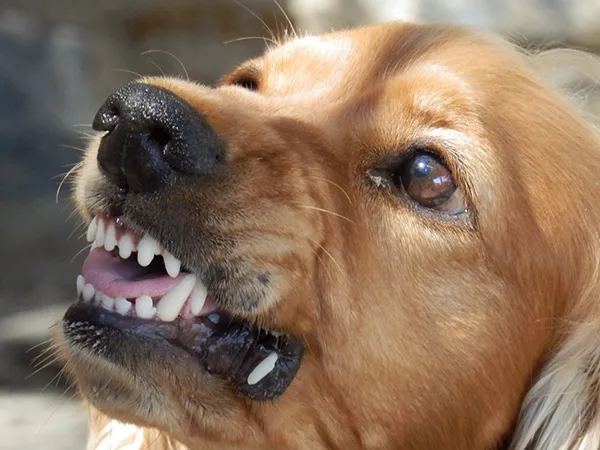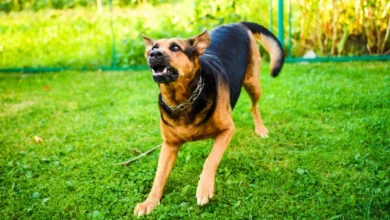
Biting is a natural behavior for dogs, especially puppies, as they explore the world with their mouths. However, as dogs grow, biting can become problematic, posing risks to both humans and other animals. Understanding the reasons behind this behavior and how to address it is crucial for every dog owner. In this article, we’ll explore effective strategies to curb biting behavior in dogs and ensure they become well-mannered, social pets.
1. The Importance of Addressing Dog Biting Legally
When a dog’s biting behavior goes unchecked, it can lead to legal issues, especially if the dog causes injury to someone. In such cases, pet owners may find themselves facing lawsuits, as victims of dog bites are entitled to seek compensation for medical bills, emotional trauma, and other damages. Working with experts like BelluckFox can be essential for dog owners who need legal advice, particularly if their dog’s behavior results in injury to others. A lawyer can guide you through the legal complexities of dog bite incidents and help you understand your rights and responsibilities as a pet owner.
While addressing the legal side is important in severe cases, prevention is key. Curbing biting behavior in dogs before it escalates is not only beneficial for your peace of mind but also for the safety and well-being of those around you.
2. Socializing Your Dog Early On
Socialization is one of the most effective ways to prevent biting in dogs. Introducing your dog to different environments, people, and animals at an early age helps them become well-adjusted and less fearful. Dogs that are not properly socialized may bite out of fear, anxiety, or aggression when exposed to unfamiliar situations.
Puppies go through a critical socialization period between 3 to 14 weeks of age. During this time, exposing them to various experiences helps them learn to handle new situations without becoming defensive or aggressive. Puppy classes, controlled playdates, and regular interactions with new people and environments can significantly reduce the likelihood of biting behavior.
3. Understanding Why Dogs Bite
To effectively curb biting behavior, it’s essential to understand why dogs bite in the first place. Dogs may bite for several reasons, including fear, territorial defense, pain, or frustration. Puppies often bite during play as they explore their world, while adult dogs may bite to protect their space or belongings.
If your dog is biting, try to observe the circumstances surrounding the behavior. Does it happen during play, when they’re feeling scared, or when you approach their food or toys? Identifying the root cause will help you determine the most appropriate way to address the issue. If you suspect pain or health issues, consult a veterinarian to rule out any underlying medical problems.
4. Teach Bite Inhibition
Bite inhibition is a crucial skill that every dog should learn, especially during puppyhood. It involves teaching dogs how to control the force of their bite. Puppies naturally learn bite inhibition from their littermates and mother; when they bite too hard, the other dogs yelp or withdraw, signaling that the bite was too strong.
You can replicate this by letting out a loud “ouch” or “no” when your puppy bites too hard during play. Immediately stop playing and ignore your dog for a short period. This teaches them that biting too hard results in the end of fun, encouraging them to be more gentle. Consistent reinforcement of this lesson helps dogs learn to moderate their bite strength, reducing the chances of future aggressive biting.
5. Positive Reinforcement Training
Positive reinforcement training is a powerful tool in curbing unwanted behaviors, including biting. Instead of punishing your dog for biting, focus on rewarding them when they behave appropriately. For example, if your dog refrains from biting during play or stops when you command, reward them with treats, praise, or toys.
This approach not only helps eliminate biting behavior but also strengthens the bond between you and your dog. Positive reinforcement creates a more trusting and cooperative relationship, making your dog more likely to respond to your commands and training.
6. Provide Appropriate Chewing Outlets

Many dogs bite or chew because they are teething, bored, or in need of mental stimulation. Providing appropriate chew toys can help redirect this behavior. Puppies, in particular, go through a teething phase where chewing is a natural way to soothe discomfort.
Make sure your dog has access to a variety of chew toys designed to satisfy their need to bite and chew. If they start biting hands, furniture, or other inappropriate objects, calmly redirect them to a toy. Over time, this will help your dog understand which items are acceptable to bite and which are not.
7. Seek Professional Help for Persistent Biting
If your dog’s biting behavior continues despite your best efforts, it’s important to recognize when it’s time to seek professional help. Persistent biting, especially if it is aggressive or happens frequently, can be a sign of deeper behavioral issues that may require expert intervention. A certified dog trainer or animal behaviorist can assess the underlying causes of the biting and develop a tailored training plan to address the problem.
These professionals are trained to identify specific triggers that may be prompting the biting, such as fear, anxiety, territorial behavior, or frustration. They can also offer guidance on how to handle your dog in stressful situations and provide you with effective tools for managing and correcting the behavior. In some cases, a trainer may introduce specialized techniques, like desensitization and counter-conditioning, to gradually reduce your dog’s aggressive responses and build their confidence in stressful scenarios.
For dogs exhibiting severe biting behaviors, such as frequent biting of strangers or aggressive biting that draws blood, working with a behaviorist is particularly critical. In these cases, professional trainers can help implement more advanced strategies, such as muzzle training or controlled exposure therapy, to ensure the safety of your dog and those around them.
Curbing biting behavior in dogs requires patience, consistency, and an understanding of why the behavior occurs. Early socialization, bite inhibition training, and positive reinforcement are key strategies for preventing biting before it becomes a problem. By providing appropriate outlets for chewing and seeking professional help when necessary, you can ensure that your dog grows into a well-mannered and friendly companion. Addressing biting behavior not only protects others but also helps your dog live a happier, stress-free life.



